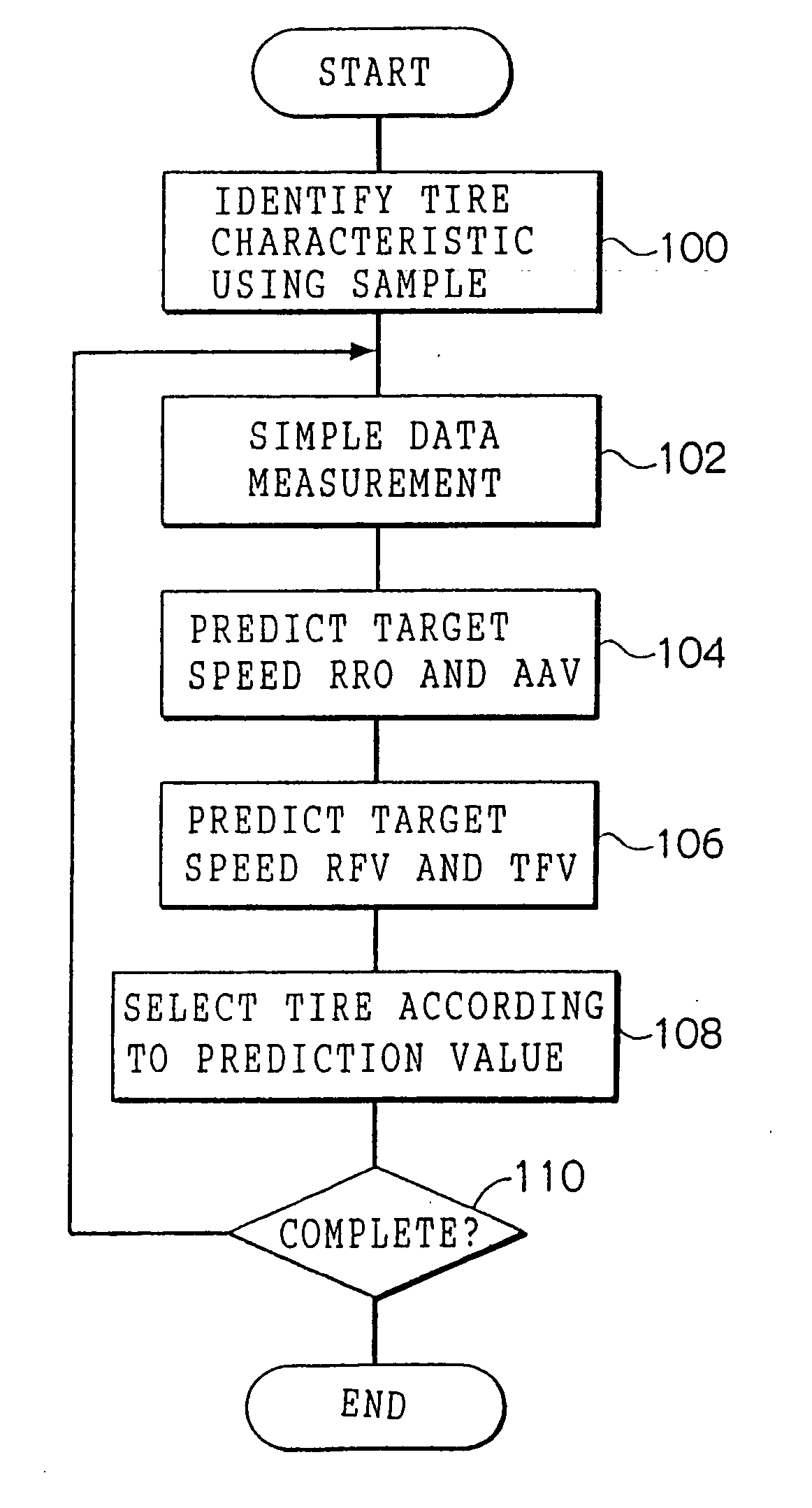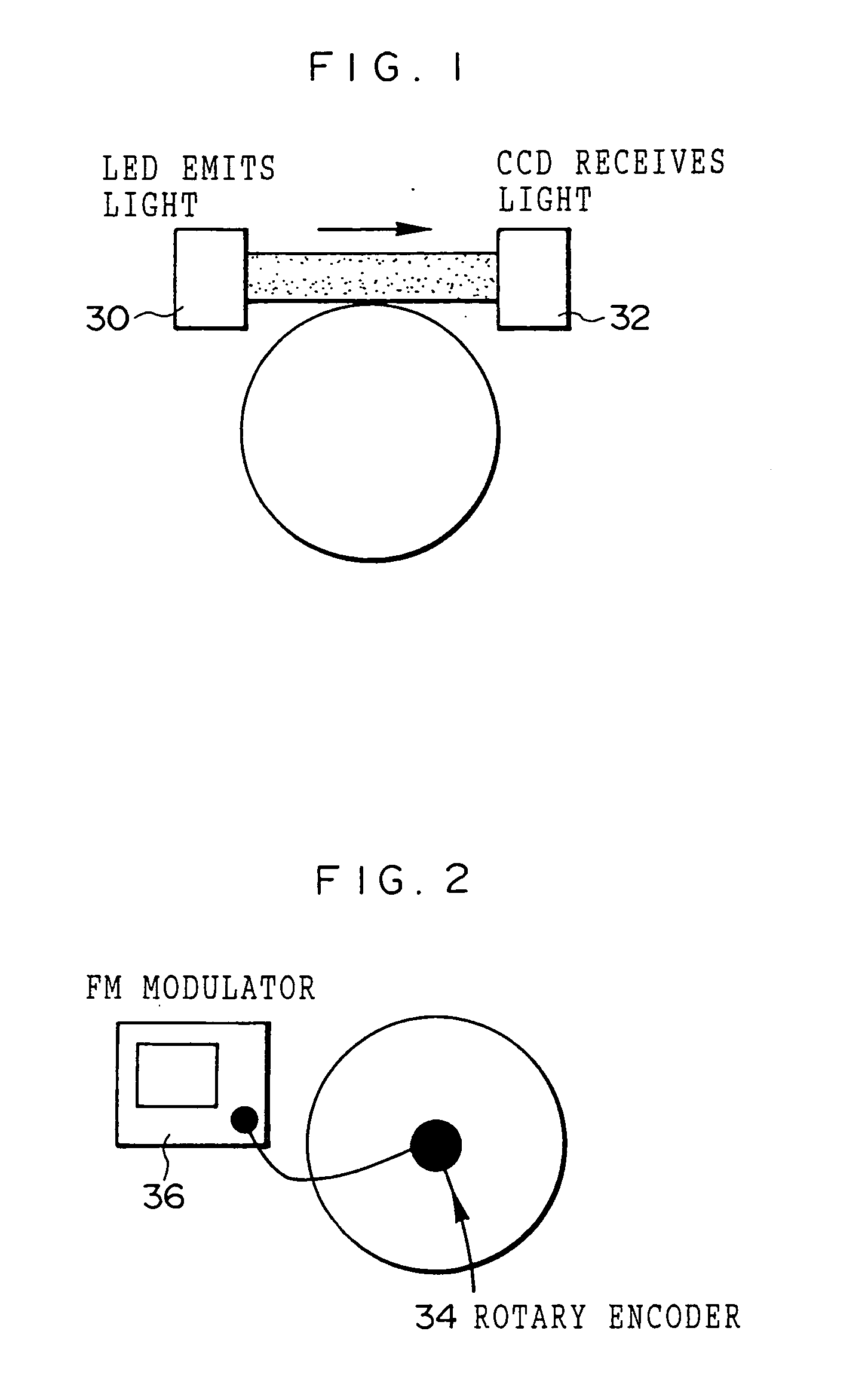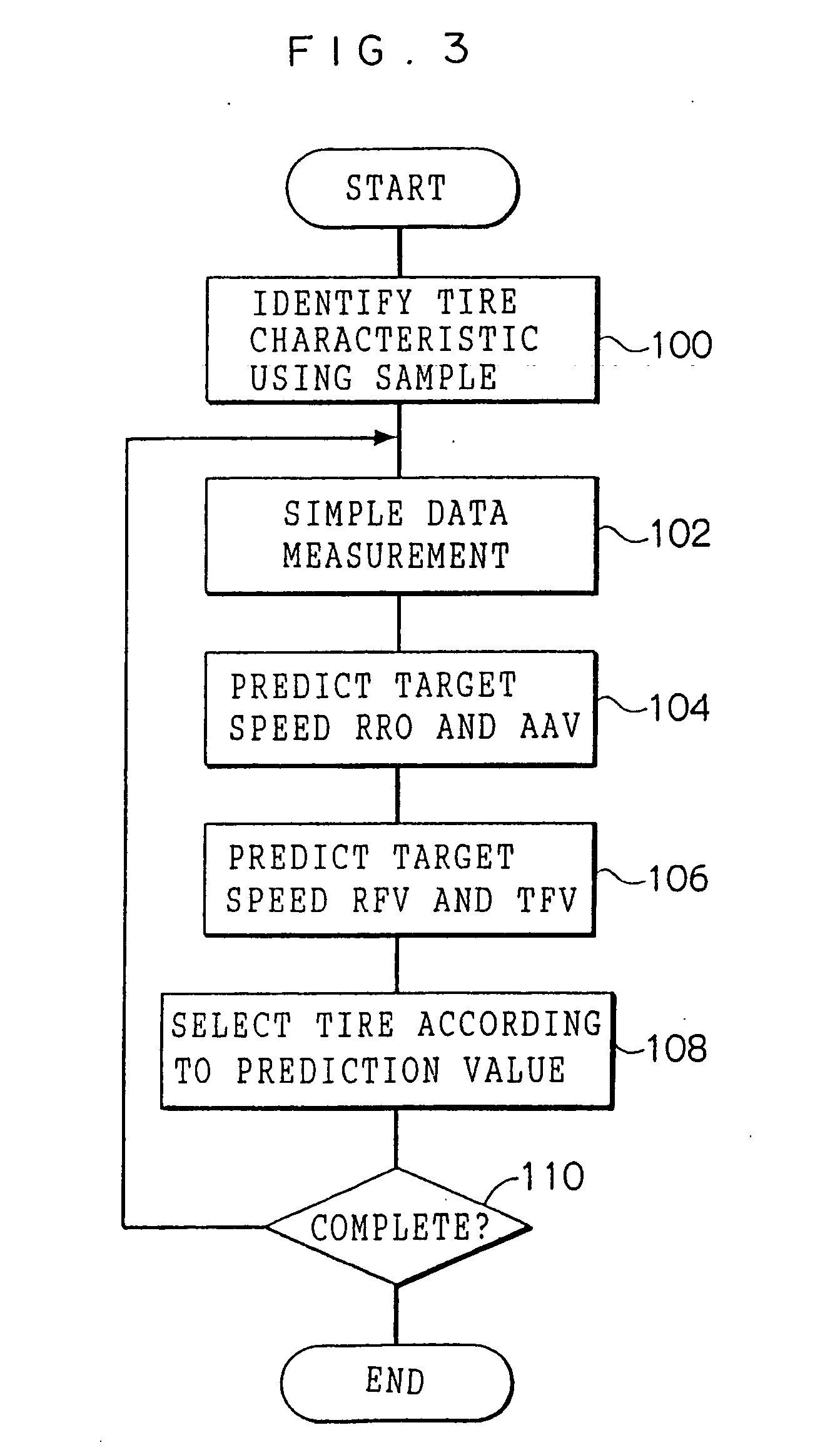Radial force variation prediction method, tangential force variation prediction method, radial run out prediction method, tire angle acceleration fluctuation prediction method, radial run out measurement apparatus, radial run out estimation method, information acquisition method, an
a technology of tangential force variation and prediction method, applied in vehicle tyre testing, electrical/magnetic diameter measurement, instruments, etc., can solve problems such as recent increas
- Summary
- Abstract
- Description
- Claims
- Application Information
AI Technical Summary
Benefits of technology
Problems solved by technology
Method used
Image
Examples
first modified example (
CORRESPONDING TO THE FIRST ASPECT OF THE TENTH INVENTION)
[0213] As shown in FIG. 27, an RRO measurement apparatus according to this modified example includes a light irradiation section 30 formed by light emitting diodes (LED) which serve as light emitting means to irradiate light and located so that emitted light is made to contact an outer periphery of a tire disposed in a rotatable manner, and a light receiving section 32 formed by a charge coupled device (CCD) which serves as light receiving means for receiving light irradiated from the light irradiation section 30. This structure of the apparatus is the same as that of the RRO measurement apparatus (see FIG. 1). The RRO measurement apparatus according to this modified example also includes a reference edge 31 disposed fixedly between the light irradiation section 30 and the light receiving section 32 and formed by a flat plate or the like, which serves as interrupting means for cutting off a part of light irradiated from the li...
second modified example (
CORRESPONDING TO THE SECOND ASPECT OF THE TENTH INVENTION)
[0216] As shown in FIG. 28, an RRO measurement apparatus according to this modified example is substantially the same as the RRO measurement apparatus according to the first modified example except that the displacement sensor 46 (see FIG. 18) and the reference edge 31 are connected by a connecting member 62 so as to correct swinging of the reference edge 31 with respect to a tire axis. The displacement sensor 46 is, as described above, mounted at the tire bearing fixing portion 40 via the stay 42 for mounting a sensor. As a result, the reference edge 31 is connected to the tire bearing fixing portion 40 via the displacement sensor 46 and the stay 42. Accordingly, swinging of the reference edge 31 with respect to the tire axis can be corrected.
[0217] As a result, compared with the first modified example, the RRO can be measured with a higher degree of accuracy.
third modified example (
CORRESPONDING TO THE THIRD ASPECT OF THE TENTH INVENTION)
[0218] As shown in FIG. 29, in this modified example, plural pairs of light irradiation sections 30 and the light receiving sections 32 are disposed around the tire. FIG. 29 shows, as an example, two pairs, but the present invention is not limited to the same.
[0219] In the above-described first and second embodiments and first and second modified examples, in order to predict the RRO, it is necessary that a tire should make at least one rotation. On the other hand, in the third modified example, the plural pairs of light irradiation sections 30 and light receiving sections 32 are disposed around the tire, and therefore, the RRO can be measured only by rotating the tire by an amount less than one rotation. More specifically, for example, if N pairs of light irradiation section 30 and light receiving section 32 (N is an integer of 2 or more) are disposed at regular intervals, the RRO can be measured only by rotating the tire by...
PUM
 Login to View More
Login to View More Abstract
Description
Claims
Application Information
 Login to View More
Login to View More - R&D
- Intellectual Property
- Life Sciences
- Materials
- Tech Scout
- Unparalleled Data Quality
- Higher Quality Content
- 60% Fewer Hallucinations
Browse by: Latest US Patents, China's latest patents, Technical Efficacy Thesaurus, Application Domain, Technology Topic, Popular Technical Reports.
© 2025 PatSnap. All rights reserved.Legal|Privacy policy|Modern Slavery Act Transparency Statement|Sitemap|About US| Contact US: help@patsnap.com



